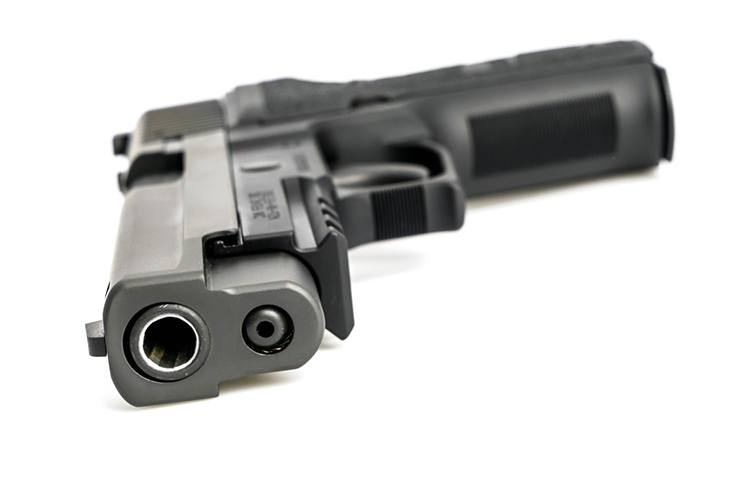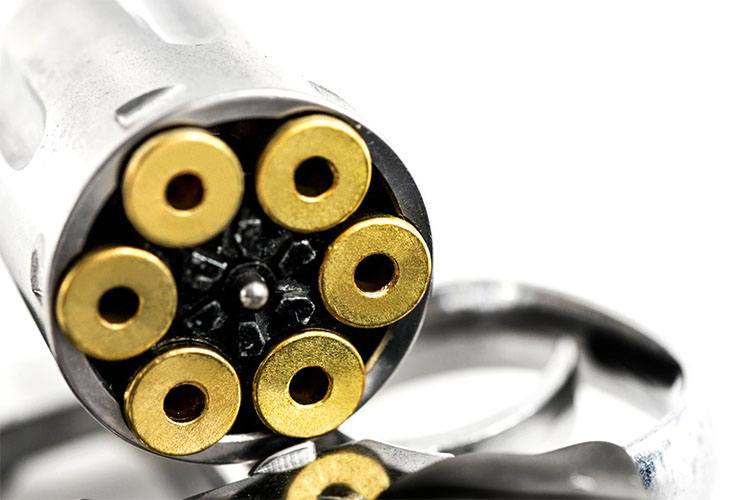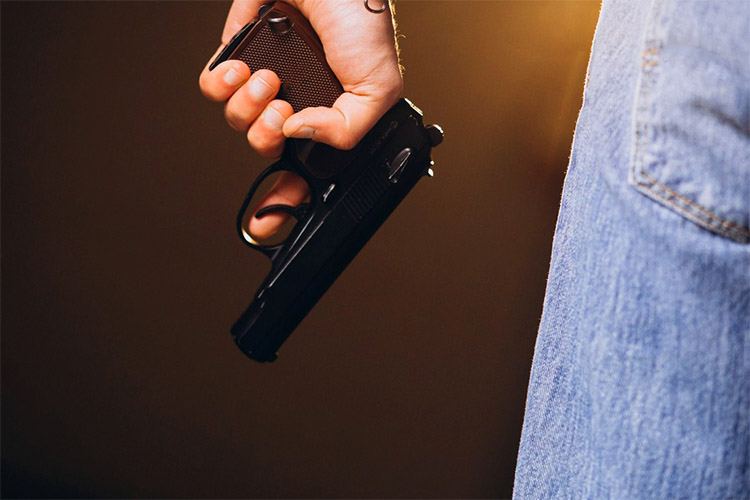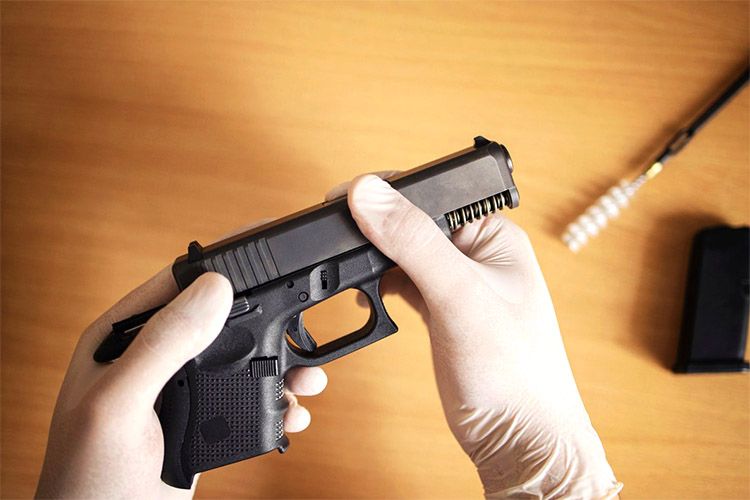Contents
- 1 Why Is It Important to Measure Gun Barrel?
- 2 What Tools Are Needed to Measure Gun Barrel?
- 3 How to Measure Gun Barrel Diameter?
- 4 How to Measure Gun Barrel Length?
- 5 What Are the Standard Measurements for Gun Barrels?
- 6 How Often Should You Measure Your Gun Barrel?
- 7 What Are the Common Issues That Can Arise from Incorrect Barrel Measurements?
- 8 How to Maintain the Accuracy of Your Gun Barrel?
- 9 Frequently Asked Questions
Understanding how to measure a gun barrel is essential for any firearm owner, as accurate measurements are critical for ensuring optimal performance and safety.
This guide addresses the significance of precise barrel measurements, the necessary tools, and provides step-by-step instructions for measuring both barrel diameter and length.
It also includes standard measurements, maintenance tips, and common issues that may arise from incorrect measurements. By the conclusion of this guide, readers will be better equipped to maintain their firearm’s accuracy and longevity.
Why Is It Important to Measure Gun Barrel?
Measuring the gun barrel is essential for ensuring firearm safety, optimizing shooting accuracy, and enhancing the overall longevity of the firearm. Accurate measurements of gun barrel dimensions, including length and diameter, are critical for assessing barrel wear and establishing an appropriate maintenance schedule.
This practice not only facilitates effective cleaning of gun barrels but also contributes to a comprehensive understanding of how barrel consistency influences bullet performance.
Ultimately, understanding how to measure gun barrel dimensions leads to improved shooting performance and reinforces safety measures during the care of firearms.
What Tools Are Needed to Measure Gun Barrel?
To accurately measure a gun barrel, specific tools are necessary, each tailored to ensure precision and reliability in measurements.
Essential instruments include:
- Calipers for measuring the barrel diameter;
- Bore gauges for assessing internal dimensions;
- Micrometers for precision measurements.
Utilizing the appropriate measuring instruments is critical for conducting thorough inspections and ensuring the integrity of the gun barrel, thereby optimizing shooting performance.
How to Measure Gun Barrel Diameter?

Measuring the diameter of a gun barrel is a crucial step in maintaining firearm accuracy and precision. Several measurement methods are available, with tools such as calipers and bore gauges recognized as the most reliable for obtaining accurate results.
Mastering the proper technique for measuring barrel diameter is essential, as it not only aids in detecting potential wear and tear but also provides valuable insights into the frequency of maintenance required to ensure optimal shooting performance.
1. Using a Caliper
Calipers are essential tools for accurately measuring barrel diameter, enabling gunsmiths to maintain optimal precision in firearms care. By positioning the caliper’s jaws around the barrel, users can obtain precise measurements that are vital for evaluating the overall condition of the firearm.
To begin, it is essential to ensure that the caliper is properly calibrated to prevent any discrepancies in measurement. The user should securely hold the firearm, maintaining a steady grip while positioning the caliper. As the jaws close around the barrel, it is important to apply gentle pressure to avoid distorting the measurement.
After obtaining the initial reading, it is advisable to double-check the result by taking at least two additional measurements at different points along the barrel.
This technique not only enhances accuracy but also assists in identifying any irregularities that may impact the firearm’s performance.
2. Using a Bore Gauge
A bore gauge is a specialized instrument designed for the precise measurement of the internal diameter of a gun barrel, providing vital data essential for firearms maintenance and accuracy assessment.
The use of a bore gauge enables gunsmiths to identify irregularities in barrel dimensions that could potentially impact shooting performance.
The process commences with the meticulous calibration of the gauge to ensure it delivers reliable readings prior to its application. Once calibrated, the bore gauge is inserted into the barrel, facilitating accurate detection of diameter variations at various points along the bore.
This step is crucial, as even minor inconsistencies can result in misaligned shots or increased wear on the ammunition.
Effectively interpreting the measurements obtained not only supports routine inspections but also enhances the overall safety and functionality of the firearm.
The precision offered by a bore gauge often exceeds that of calipers or other measuring instruments, making it the preferred choice for serious firearm enthusiasts and professionals alike.
How to Measure Gun Barrel Length?
Understanding how to measure gun barrel length is essential for comprehending the specific characteristics of a firearm, as it directly impacts shooting accuracy and overall performance.
The use of tools such as measuring tapes and barrel calipers enables precise assessments of barrel length, which is critical for adherence to measurement standards established in firearms regulations.
1. Using a Measuring Tape
A measuring tape serves as a straightforward tool for determining barrel length, offering gun owners an efficient method for conducting their measurements. By extending the tape from the muzzle to the breech, one can accurately assess the total length of the barrel.
To ensure precision during this process, it is essential to keep the measuring tape flat and taut to avoid any bends that could result in inaccuracies.
Begin by positioning the end of the tape at the very tip of the muzzle, carefully aligning it along the exterior of the barrel. As you proceed towards the breech, remain attentive to any curves or attachments that may affect the measurement.
It is advisable to have a second person assist, particularly when measuring larger firearms, to maintain the stability of the measuring tape. Common pitfalls to be aware of include misreading the tape markings and measuring from incorrect reference points, both of which can lead to discrepancies in the reported barrel lengths.
2. Using a Barrel Caliper
A barrel caliper provides a precise method for measuring gun barrel length, facilitating a reliable assessment that is crucial for the maintenance of firearms. This tool delivers accurate measurements that can significantly influence shooting accuracy and overall firearm performance.
When employing a barrel caliper, users should first ensure that the caliper is properly calibrated and make any necessary adjustments to account for variations in measurement techniques. The firearm must be securely positioned to prevent any movement during the measurement process.
As the caliper is applied to the barrel, it is essential to focus on the specific measurement points, including the chamber and muzzle ends, to obtain an accurate length.
This meticulous procedure not only preserves the integrity of the firearm but also enhances predictive performance in various shooting scenarios, thereby instilling greater confidence and precision during use.
What Are the Standard Measurements for Gun Barrels?
Understanding the standard measurements for gun barrels is essential for maintaining accuracy and ensuring compatibility with ammunition. Important measurements include:
- Bore diameter;
- Groove diameter;
- Twist rate;
- Chamber length;
- Barrel length.
Each of these factors significantly influences a firearm’s performance and safety.
1. Bore Diameter
The bore diameter is a critical measurement that significantly influences the accuracy and performance of a firearm, impacting both bullet fit and gas seal. Understanding the bore diameter is essential for proper ammunition selection and accuracy testing.
“To ensure a precise bore diameter, it’s crucial to measure the gun barrel accurately. This ensures that the selected bullet fits correctly, maximizing the seal to prevent gas leaks and allowing the projectile to travel down the barrel with minimal friction.
This precision can be pivotal in achieving tight groupings on the target, as even slight variations can lead to considerable deviations in bullet trajectory.
To measure bore diameter accurately, shooters may utilize calipers or specialized bore gauges, ensuring they account for any wear and tear that may affect the firearm’s performance over time.
Maintaining this measurement not only assists in choosing compatible ammunition but also plays a vital role in the overall maintenance and longevity of the firearm.
2. Groove Diameter
Groove diameter is a critical measurement that complements bore diameter, encompassing the depth and width of the rifling within the barrel. Accurate measurement of groove diameter is essential for optimizing bullet performance and ensuring consistent accuracy.
A comprehensive understanding of groove diameter is integral to barrel profiling, as it directly impacts how the bullet engages with the rifling during its passage down the barrel.
The precise dimensions of the groove diameter determine the bullet’s stabilization, influence its spin rate, and affect its overall trajectory.
By diligently monitoring these measurements, shooters can adjust their ammunition to align more effectively with their firearm, potentially resulting in tighter groupings on target.
Consequently, knowledge of groove diameter not only enhances ammunition performance but also significantly contributes to improved shooting accuracy, making it a fundamental aspect of firearm maintenance and optimization.
3. Twist Rate
The twist rate refers to the rate at which the rifling within the barrel rotates the bullet, thereby influencing its stability and accuracy. Understanding the twist rate is essential for appropriately matching ammunition to the firearm, which ensures optimal bullet performance and enhances accuracy.
To ascertain the twist rate, one must measure the distance a bullet travels within the barrel to complete one full rotation. This can be accomplished by either physically inspecting the barrel or consulting manufacturer specifications.
An appropriate twist rate can significantly improve the shooter’s performance by impacting various factors such as bullet drop and wind drift. When the bullet is spun correctly, it maintains a straighter trajectory, resulting in tighter groupings on target.
Consequently, understanding the twist rate is imperative for both competitive shooters and hunters, as it ensures that the selected ammunition is compatible with the firearm’s characteristics, ultimately contributing to a more successful shooting experience.
4. Chamber Length
Chamber length is a critical measurement that significantly impacts the safety and functionality of a firearm, as it determines the length of cartridges that can be safely loaded. An accurate measurement of chamber length is essential for ensuring compatibility with ammunition and enhancing overall firearm safety.
Understanding how to measure this important aspect requires the use of precise tools and techniques to determine the distance from the breech face to the maximum allowable cartridge length.
This measurement is crucial in preventing hazardous situations, such as misfires or gas leaks, which may occur if cartridges exceed the chamber’s specifications.
Regularly inspecting chamber length is an integral part of effective maintenance practices, helping firearm owners understand how to measure gun barrel dimensions accurately and identify potential issues that could affect performance over time.
Ultimately, adhering to these standards contributes to a safer shooting experience and promotes the longevity and reliability of firearms.
5. Barrel Length
Barrel length is a crucial factor influencing both the velocity and accuracy of a bullet, making its precise measurement essential for achieving optimal firearm performance. Different firearms necessitate specific barrel lengths to meet desired shooting outcomes.
Generally, a longer barrel facilitates higher muzzle velocity and enhances the stability of the bullet over extended distances, while a shorter barrel can improve maneuverability without significantly compromising velocity. The implications of barrel length extend beyond distance and accuracy; it also affects recoil management and the overall shooting experience.
To ensure accurate measurements, it is important to utilize reliable measuring techniques, such as calipers or specialized gauge tools. Additionally, adhering to consistent maintenance schedules, which include regular inspections of barrel condition and alignment, as well as employing skilled gunsmithing techniques, can help optimize barrel length performance and extend the lifespan of the firearm.
How Often Should You Measure Your Gun Barrel?

Regular measurement of the gun barrel is essential for effective firearm maintenance and the assurance of optimal performance. Establishing a barrel maintenance schedule is crucial, as it enables gun owners to detect changes over time, such as wear and tear, which can directly affect shooting accuracy.
The frequency of these measurements typically depends on the usage of the firearm and the specific type of firearm in question. For example, individuals engaged in competitive shooting or frequent target practice should consider measuring their barrels after a few hundred rounds, whereas firearms used infrequently may require inspections only every few months.
Developing a comprehensive maintenance checklist is advantageous; it should encompass not only periodic barrel measurements but also inspections for rust, bore obstructions, and overall structural integrity.
By adhering to this routine, firearm enthusiasts can ensure their weapons remain in optimal operating condition, ultimately enhancing both safety and performance during use.
What Are the Common Issues That Can Arise from Incorrect Barrel Measurements?
Incorrect barrel measurements can result in a variety of issues, including barrel wear, compromised accuracy, and potentially hazardous shooting experiences. Failing to conduct precise measurements may lead to improper ammunition fit and increased risks during firearm use.
The consequences of these oversights can be significant – they not only jeopardize the shooter’s safety but also diminish the overall performance of the firearm. For example, a poorly fitted barrel may cause erratic bullet trajectories or excessive wear on components, ultimately resulting in malfunction.
To proactively address such concerns, it is essential for firearm owners to prioritize regular compliance inspections.
These evaluations facilitate the early detection of minor discrepancies and ensure that all components are functioning harmoniously, thereby enhancing both safety and shooting efficacy.
How to Maintain the Accuracy of Your Gun Barrel?
Ensuring the accuracy of a gun barrel is crucial for achieving optimal shooting performance and enhancing the firearm’s longevity.
Understanding how to measure gun barrel precision plays a vital role in maintaining this accuracy over time.Regular cleaning and maintenance are critical in preserving the integrity of the barrel.
Additionally, implementing an effective firearm maintenance checklist is important to ensure that all necessary tasks are completed systematically.
1. Regular Cleaning and Maintenance
Regular cleaning of the gun barrel is essential for the removal of fouling, debris, and residue that may negatively impact accuracy and performance.
Establishing a systematic cleaning routine is essential for keeping your firearm in top condition and reducing the need for extensive repairs. Learning how to measure gun barrel performance is a key step in maintaining this routine effectively.
To maintain firearm efficiency, it is advisable to clean the barrel after each shooting session, particularly if a significant volume of ammunition has been fired.
Additionally, conducting a thorough cleaning at least once a month, regardless of whether the firearm has been used, is recommended to prevent the accumulation of humidity and dust.
The essential tools for this maintenance task include:
- A cleaning rod;
- Brushes;
- Patches;
- A reliable solvent or cleaning solution specifically formulated for firearms.
The cleaning process should begin with selecting the appropriate brush for the caliber of the firearm. Carefully insert the cleaning rod through the barrel and apply solvent to the brush, ensuring it is adequately soaked. Scrub the interior of the barrel to dislodge any buildup, followed by the use of patches to remove debris.
This process should be repeated until the patches emerge clean. Finally, a light application of oil should be applied to protect against corrosion.
2. Proper Storage
Proper storage of firearms is vital for maintaining the integrity and accuracy of the gun barrel. Storing firearms in an appropriate environment safeguards them against environmental factors that may lead to deterioration and wear.
To ensure that firearms remain in optimal condition, it is essential to regulate humidity and temperature levels within the storage area. Excessive moisture can result in rust and corrosion, while extreme temperatures can degrade materials and impair the functionality of the weapon.
Implementing protective measures, such as utilizing dehumidifiers and temperature monitors, can significantly enhance the longevity of gun barrels.
Moreover, securing firearms in a protective case or safe not only protects them from physical damage but also deters unauthorized access, thereby promoting safety as a paramount consideration for gun owners.
3. Avoiding Hot Barrel Shots

Avoiding hot barrel shots is essential to prevent unnecessary stress and wear on the barrel, which can significantly affect accuracy over time. Ensuring that the barrel is allowed to cool adequately between shots is crucial for maintaining its integrity and overall performance.
When utilizing precision firearms, it is important for enthusiasts to recognize that prolonged shooting sessions may lead to overheating. This overheating not only compromises the material of the barrel but can also result in shifts in point of impact, thereby skewing accuracy.
4. Checking for Signs of Wear and Tear
Regular inspection for signs of wear and tear on the gun barrel is essential for maintaining the accuracy and performance of firearms. Early identification of potential issues can facilitate timely maintenance and repairs, ensuring that the firearm continues to operate safely.
To conduct an effective inspection of the barrel, one should observe for noticeable symptoms such as erosion, rust spots, and any unusual markings that may indicate underlying problems.
A comprehensive visual inspection is critical, and utilizing tools such as a bore light or a magnifying glass can assist in identifying imperfections that may not be apparent to the naked eye.
Incorporating these inspections into a regular maintenance schedule – ideally after every few uses or at a minimum on a monthly basis – can enable firearm owners to proactively address issues, thereby enhancing both the longevity and reliability of their weapon.

